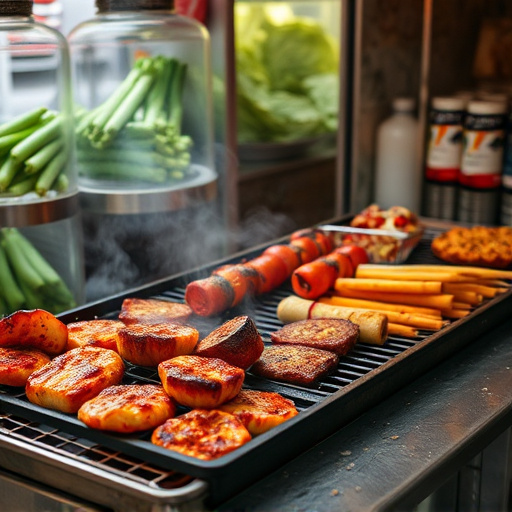BBQ enthusiasts can achieve a delightful oven-baked brisket experience by understanding the distinct cooking needs of its flat and point sections. A combination of low and slow techniques, using a 250°F (120°C) oven, ensures even cooking. Choosing a whole packer brisket with a healthy fat cap from aged sources, allowing it to reach room temperature, and seasoning simply with salt, pepper, garlic powder, and paprika are crucial first steps. A dry rub of these spices enhances flavor without needing a smoker. Mastering slow cooking at low temperatures breaks down connective tissues, resulting in tender, juicy brisket that satisfies all BBQ lovers.
Introducing our ultimate guide to crafting the perfect oven-baked brisket, a beginner-friendly approach to this classic BBQ cut. Brisket, known for its rich flavor and challenging texture, becomes manageable in the oven. This comprehensive article takes you through every step, from understanding the brisket’s cut and its significance to mastering cooking times. Learn essential tools, seasoning techniques, and the science behind slow cooking. Achieve tender, juicy results with our simple oven BBQ brisket recipe, perfect for novice chefs.
- Understanding Brisket: The Cut and Its Significance
- Why Oven-Baked Brisket is a Beginner-Friendly Option
- Essential Tools and Equipment for the Perfect BBQ Brisket Recipe
- Choosing the Right Brisket: Tips for Beginners
- Dry Rub: Seasoning Your Brisket to Perfection
- The Science Behind Slow Cooking: Achieving Tender Results
- Mastering the Oven Temperature and Cooking Times
Understanding Brisket: The Cut and Its Significance
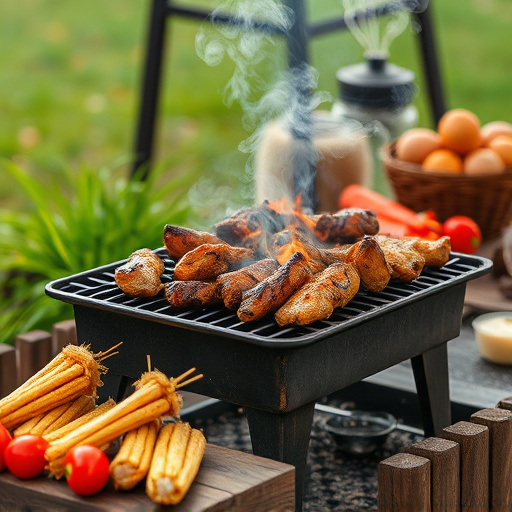
Brisket, a cut from the breast of the cattle, is a favorite among BBQ enthusiasts for its rich, tender meat when cooked correctly. When considering an oven-baked brisket recipe, understanding this particular cut is key to achieving a delicious result. The flat and point sections of brisket have distinct cooking characteristics; the flat side, with less fat, requires slower, moist heat to break down tough collagen into gelatin, resulting in remarkably tender meat.
In contrast, the point section benefits from faster cooking and higher temperatures due to its higher fat content. For an oven-baked brisket, a combination of low and slow cooking techniques is ideal. This approach allows for even cooking throughout the entire cut, ensuring that both the flat and point sections reach their maximum potential.
Why Oven-Baked Brisket is a Beginner-Friendly Option
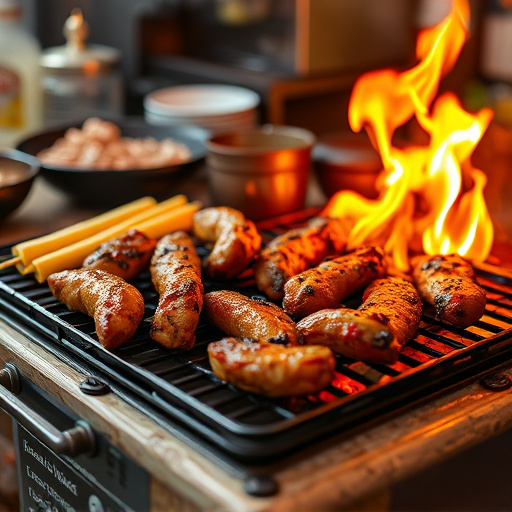
Brisket, a cut known for its rich flavor and tender texture, is often considered a challenging meat to master in BBQ, but oven-baked brisket offers an accessible entry point for beginners. Unlike traditional smoking methods that require specialized equipment and time-consuming processes, baking allows you to achieve delicious results with relative ease. This method involves cooking the brisket slowly at a consistent temperature within an oven, resulting in moist, flavorful meat that practically falls apart.
Additionally, oven-baked brisket recipes are versatile, allowing for adjustments to suit personal preferences. You can control the seasoning and sauce options, making it an ideal platform for experimentation. With a simple BBQ brisket recipe oven-bake method, beginners can impress their family and friends with a hearty, mouthwatering dish, fostering confidence in their culinary skills and setting them on a path to becoming BBQ experts.
Essential Tools and Equipment for the Perfect BBQ Brisket Recipe
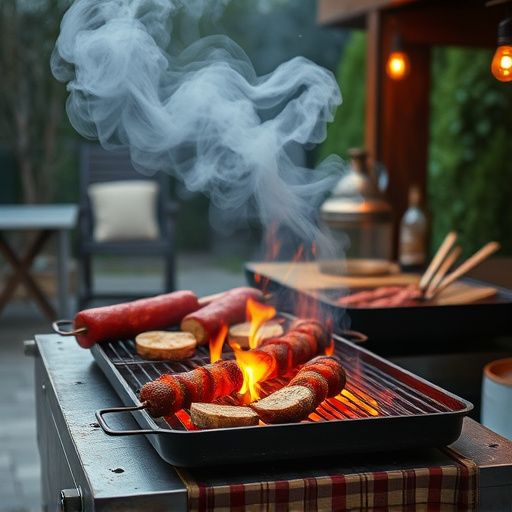
Baking a perfect BBQ brisket in an oven requires some specific tools and equipment to achieve that delicious, tender result. A good starting point is a large, heavy-duty oven capable of maintaining consistent low temperatures—ideally around 250°F (120°C). This helps to slowly cook the meat, locking in moisture and ensuring it becomes incredibly tender. You’ll also need a quality brisket pan or roasting tray that can retain juices effectively.
Essential tools include a meat thermometer to monitor internal temperatures, especially as you aim for an internal temperature of 165°F (74°C) before slicing. A good pair of kitchen shears or a sharp knife is crucial for trimming and slicing the brisket accurately. Additionally, aluminum foil plays a vital role in creating a steamy environment within the oven, keeping the meat moist during the long cook time. Having these tools on hand will make your BBQ brisket recipe oven-baking experience a breeze.
Choosing the Right Brisket: Tips for Beginners
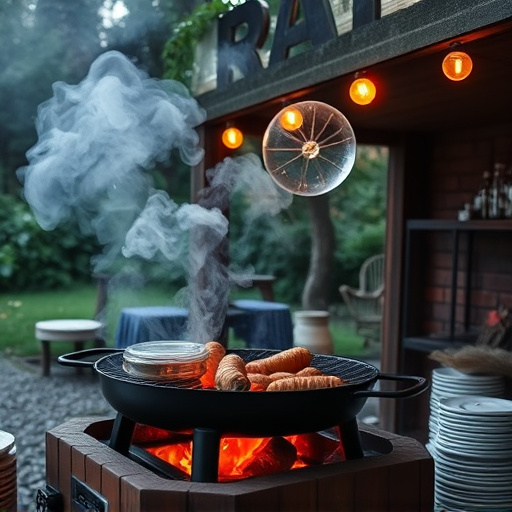
Choosing the right brisket is half the battle won when it comes to crafting a mouthwatering BBQ brisket recipe in the oven for beginners. Opt for a whole packer brisket, which is the most popular cut for smoking and baking due to its even marbling and good fat-to-meat ratio. Look for a piece with a good layer of fat cap—around 1/4 inch or more—as this will help keep the meat moist during the slow cooking process in the oven. Avoid briskets with large chunks of hard, white fat as these can be tough.
Freshness is key; purchase your brisket from a reputable source and aim for one that’s at least 12-18 months old. This age ensures the meat is well-marbled and tender. Before cooking, let the brisket come to room temperature—this helps achieve even cooking. Seasoning is another crucial step; a simple rub of salt, pepper, garlic powder, and paprika will do the trick. Remember, you can always add more flavor during the rest or cutting stage, but it’s harder to rectify under-seasoned meat.
Dry Rub: Seasoning Your Brisket to Perfection
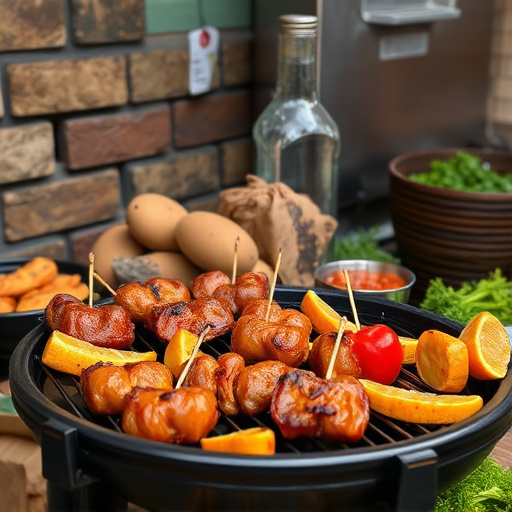
Brisket is a cut of meat that truly comes alive when slow-cooked to perfection, and using an oven is a great way for beginners to master this BBQ essential without the fuss of smoking. A dry rub is a crucial component in achieving that mouthwatering, smoky flavor without the need for a smoker. This simple seasoning blend is packed with flavorful ingredients like salt, pepper, garlic, paprika, and brown sugar, which cling to the meat during the baking process, infusing it with rich, savory notes.
When preparing your BBQ brisket recipe oven-style, rub both sides of the meat generously before wrapping it tightly in foil. This step is key to ensuring that all those delicious spices penetrate the flesh, creating a tender, juicy brisket that practically falls apart when sliced. The aroma that fills your kitchen as the meat bakes will have you salivating—it’s a true culinary delight!
The Science Behind Slow Cooking: Achieving Tender Results
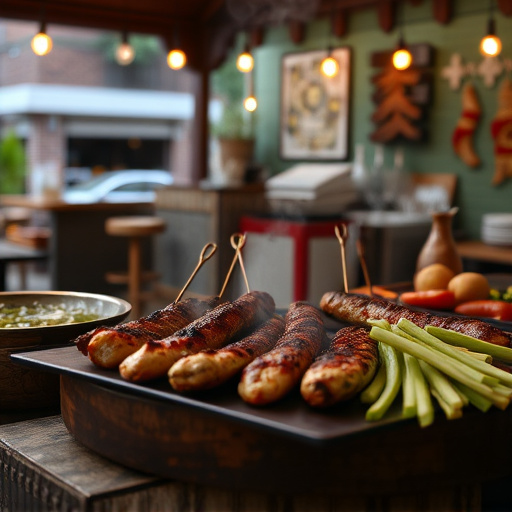
The art of slow cooking is a science that every beginner aspiring to master the perfect BBQ Brisket Recipe in an oven should understand. This method is all about transforming a tough cut of meat, like brisket, into a melt-in-your-mouth delicacy through a process called collagen degradation. Collagen, a protein that makes up much of the connective tissue in meat, becomes tenderized when cooked slowly at low temperatures. As time passes, the heat gradually breaks down these tough fibers, transforming them into gelatin, resulting in incredibly moist and tender brisket.
This slow-cooking process is a game-changer for oven-roasted BBQ Brisket. Unlike high-heat grilling or fast cooking methods, which can lead to tough, stringy meat, low-and-slow cooking ensures that the internal temperature of the brisket rises gradually, allowing for even collagen breakdown. This results in a juicy, flavorful cut of meat that simply falls apart when shredded, satisfying both novice and expert BBQ enthusiasts alike.
Mastering the Oven Temperature and Cooking Times
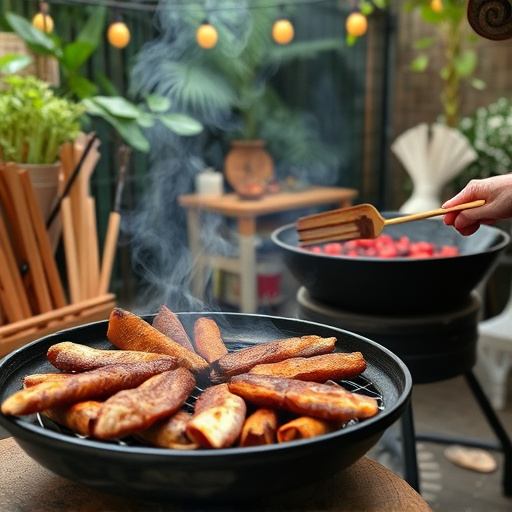
Mastering the oven temperature and cooking times is key to achieving tender, juicy BBQ brisket in your kitchen. Most recipes recommend a low and slow approach, aiming for a consistent temperature around 250-300°F (121-149°C). This may seem slower than traditional smoking methods, but it ensures the meat cooks evenly without overcooking the exterior.
For a BBQ brisket recipe using an oven, allow approximately 1 to 1.5 hours per pound of meat. Start checking the internal temperature after 3-4 hours. The goal is for it to reach around 203°F (95°C) before slicing and serving. This gentle cooking process breaks down connective tissues, making the brisket incredibly tender and delicious.
